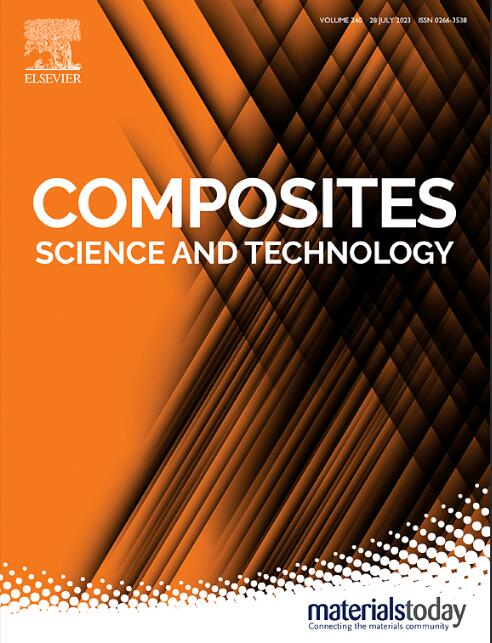Molecular simulation of interaction mechanism between wollastonite and stearic acid and use of modified wollastonite powder as filler in polyamide 6 and polypropylene
IF 8.3
1区 材料科学
Q1 MATERIALS SCIENCE, COMPOSITES
引用次数: 0
Abstract
The physical and chemical properties of wollastonite were optimized by dry modification using stearic acid, and the influence of the stearic acid dosage on the modification effect was explored. The surface functional groups of the modified and unmodified wollastonite powder were characterized using infrared spectroscopy, and a molecular simulation was employed to evaluate the micromechanism of the stearic acid-modified wollastonite. The surface of the wollastonite is most active when a single hydroxyl group is bound to its surface and the hydroxyl group does not attract the atoms of wollastonite itself. A C–O–Ca bond is formed between the stearic acid and wollastonite, and in terms of the activation index, the optimal stearic acid dosage is 1.5 %. Composite materials were prepared by filling polyamide 6 (PA6) and polypropylene (PP) with the unmodified and modified wollastonite powders, and the impact strength, tensile strength, bending strength, and other indicators of the composite materials were tested. The PA6 and PP samples filled with unmodified wollastonite showed improved rigidity but lower toughness compared to the pure PA6 and PP samples. In contrast, using the modified wollastonite as a filler simultaneously improved both the rigidity and toughness of the PA6 and PP samples.

硅灰石与硬脂酸相互作用机理的分子模拟及改性硅灰石粉体在聚酰胺6和聚丙烯中的应用
采用硬脂酸对硅灰石进行干法改性,优化了硅灰石的理化性能,探讨了硬脂酸用量对改性效果的影响。利用红外光谱对改性和未改性硅灰石粉体的表面官能团进行了表征,并采用分子模拟方法对硬脂酸改性硅灰石的微观机理进行了评价。硅灰石的表面是最活跃的,当一个羟基结合在其表面,羟基不吸引硅灰石本身的原子。硬脂酸与硅灰石之间形成C-O-Ca键,从活化指数来看,硬脂酸的最佳用量为1.5%。将未改性和改性硅灰石粉分别填充聚酰胺6 (PA6)和聚丙烯(PP)制备复合材料,并对复合材料的冲击强度、拉伸强度、抗弯强度等指标进行测试。未改性硅灰石填充的PA6和PP样品与纯PA6和PP样品相比,刚性有所提高,但韧性较低。相比之下,使用改性硅灰石作为填料同时提高了PA6和PP样品的刚性和韧性。
本文章由计算机程序翻译,如有差异,请以英文原文为准。
求助全文
约1分钟内获得全文
求助全文
来源期刊

Composites Science and Technology
工程技术-材料科学:复合
CiteScore
16.20
自引率
9.90%
发文量
611
审稿时长
33 days
期刊介绍:
Composites Science and Technology publishes refereed original articles on the fundamental and applied science of engineering composites. The focus of this journal is on polymeric matrix composites with reinforcements/fillers ranging from nano- to macro-scale. CSTE encourages manuscripts reporting unique, innovative contributions to the physics, chemistry, materials science and applied mechanics aspects of advanced composites.
Besides traditional fiber reinforced composites, novel composites with significant potential for engineering applications are encouraged.
 求助内容:
求助内容: 应助结果提醒方式:
应助结果提醒方式:


